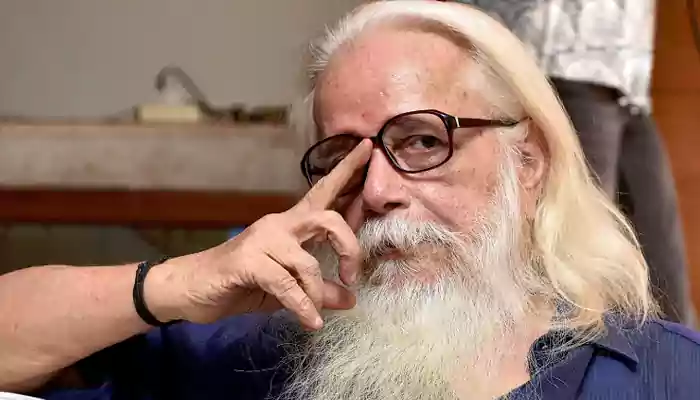
From being misunderstood by many to helping India grow in space technology, the life of Nambi Narayan is nothing less than a script of intense emotional thriller drama.
Today, 12th December, marks the 83rd birthday of Nambi Narayan, one of the finest scientists India have ever produced in the field of space technology. In this article, we will discuss about his enormous contribution in Indian space technology which led to the success of Chandrayaan-3.
Coming from a humble Tamil Brahmin family, Nambi Narayan completed his schooling from DVD Higher Secondary School. He got introduced to Vikram Sarabhai, the then chairman of ISRO in 1966. Later, he received a fellowship from NASA and pursued higher studies in space technology in Princeton University in 1969. His enormous passion lead to an unbelievable record when he completed his masters program on chemical rocket propulsion under the guidance of famous Professor Luigi Crocco within 10 months.
Following his return to India, he started working on liquid propellant motors, which revolutionized Indian space science as this field was dominated by solid motors that time.

India was taking baby steps in space exploration when Nambi joined ISRO. Nambi Narayan’s tenure at ISRO saw some groundbreaking achievements, including the development of liquid fuel rockets back in 1970s along with the Vikas engine preparation, most crucial for ISRO’s recent rockets like Polar Satellite Launch Vehicle (PSLV) and Geosynchronous Satellite Launch Vehicle (GSLV). Being a visionary, he realized the importance of liquid-fueled engines for India’s civilian space missions. The cryogenics division of rocket module was his responsibility.
Meanwhile, during 1974 to 1980, under the leadership of Nambi Narayanan, a team of approximately 100 Indian researchers (in different batches), had learnt to develop the 60-ton thrust Viking-3 Engine, at a French facility located in Vernon.
The early development of Vikas engines were made by imported French components. Then, those parts were replaced by indigenously produced machines. From 1980s, there were multiple attempts to make PSLV function properly. However, it didn't happen smoothly. After nearly 12 years of effort, Indian scientists got the desired results, and Nambi Narayanan was the pioneer of this success.
“The PSLV variants are used depending on the mission requirements. The PSLV is a flexible launch vehicle which can be rigged with two, four or six strap-ons depending on the need,” Dr. Unnikrishnan Nair said.
From the initial days, ISRO has used different varieties of PSLV for each mission.
From launching Singapore satellites TeLEOS-2 and Lumelite-4 to Chandrayaan-3, PSLV has been playing its part efficiently since it's inception. Even the first ever solar mission, Aditya-L1 mission was also launched by ISRO PSLV rocket from Satish Dhawan Space Centre in Sriharikota.
And, we must thank the vision of Nambi Narayan for this. Without his effort from 1970’s, this wouldn't have been possible.
Watch the Rocketry: The Nambi Effect movie trailer here.
(Video courtesy: Tricolour Films India YouTube channel)
All those efforts would become unnoticed by many if the movie ‘Rocketry: The Nambi Effect’ wouldn't be made. Eventually, the movie received the Best Feature Film in the 69th National Film Awards. The R Madhavan directorial is based on the life of Nambi Narayanan and how he was framed for being a spy and arrested in 1994.
Dr. Nambi Narayanan’s life tells a story about passion, resilience, and innovation. India’s advancement in space technology would not be the same without the unwavering spirit of Nambi Narayan in the face of adversity.